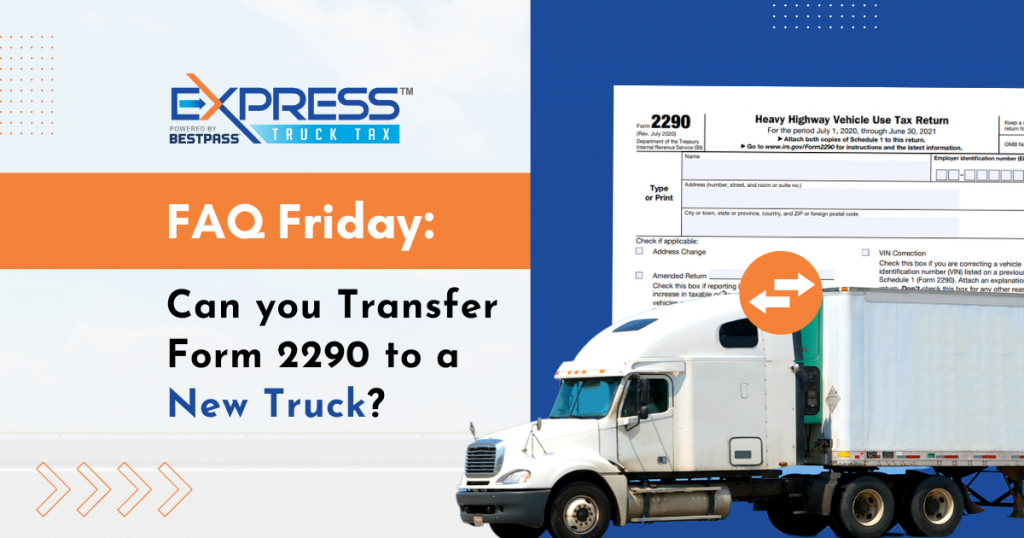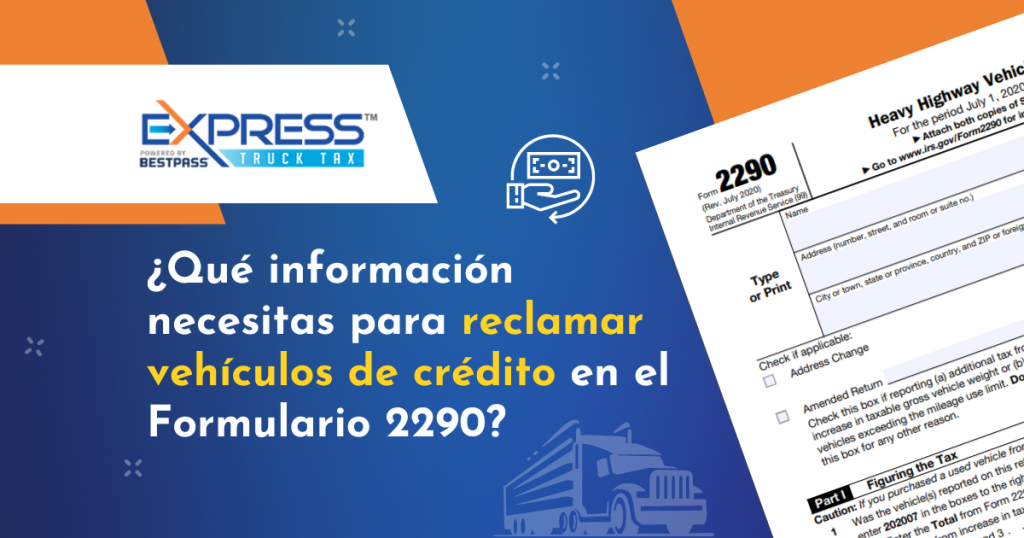
What is Form 2290?
Form 2290 has to be filed by drivers of vehicles weighing 55,000 pounds or more to the IRS for the Heavy Vehicle Use Tax annually. The Form 2290 tax year goes from July 1st to June 30th of the following year. Form 2290 as well as the Heavy Vehicle Use Tax are filed and paid for the upcoming year in advance.
Can you Transfer Form 2290 to a New truck?
When you file Form 2290 for the upcoming year this means you are paying for your truck to be on the road for the entire duration of the tax year. If this is the case, what happens if your truck is sold, destroyed, or stolen halfway through the tax year? You are able to transfer the tax of the old truck to the new one in the form of credits. The tax amount for the remaining months of the tax year that the vehicle was not on the road will be deducted from the total tax amount owed for the new vehicle.
How can you pay your Heavy Vehicle Use Tax using Sold/Destroyed Vehicle Credits?
- Log in to your ExperessTruckTax account, or sign up for one if you don’t have one.
- On the dashboard, under “Start New Return” you will select the option to “E-File for Multiple Vehicles”.
- Choose the tax year and First Used Month that corresponds to your vehicle.
- You will add your new truck under “Taxable Vehicles” and provide the information for that vehicle, including the VIN (Vehicle Identification Number) and any additional information you have for this vehicle.
- You will then add the old truck under “Sold/Destroyed Credits” and provide the information for that vehicle as well as a description of what happened to it.
- The tax you owe for the new vehicle will be calculated once the credits from the old vehicle are applied and deducted from the original tax amount owed.
- Once this is all complete, review the Summary of your return and then transmit it to the IRS.
Why File with ExpressTruckTax?
ExpressTruckTax not only offers a fast and easy solution to filing Form 2290, but it makes claiming credits for sold, destroyed, or stolen vehicles a breeze. It is important to keep in mind that if the credit amount for the old vehicle is higher than the HVUT owed, the remaining amount can be claimed using Form 8849. This form will be generated automatically in this case. Do you have a vehicle you need to transfer the Heavy Vehicle Use Tax from to a new vehicle? What are you waiting for? File with ExpressTruckTax today for an easy and stress-free way to file Form 2290.







